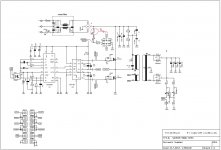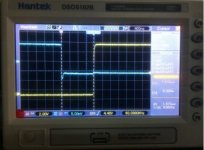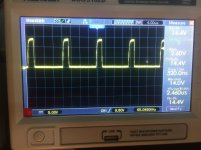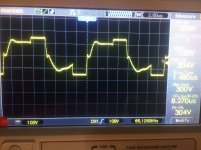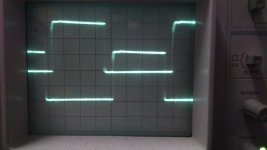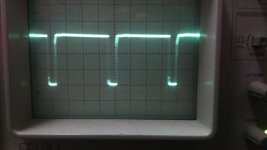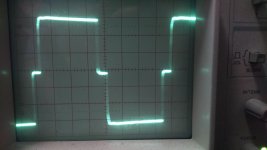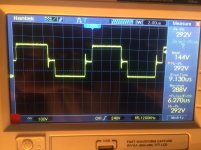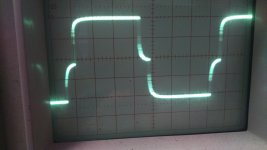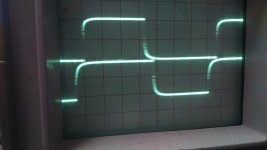Hi
Sorry for late replay .
I m not add current protection because load will be same all time and not have chance that will be change value for this smps .
Today I m replace damage FET and put new , and all so connect LOAD direct to secondary side on smps , after few min work FET is total cold and LOAD is very hot , that look me like good way .
I m see that signal on FET is not total quadratic , maybe because now power come from 310V from capacitor and 10 k resistor for start and after when smps start work come from transformers secondary coil who is wind only for power PWM part ?
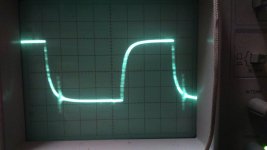
This is signal wave from PWM to FET on Q2
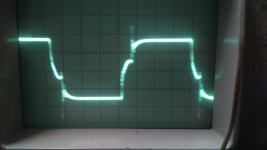
Secondary side voltage wave with connected 15R resistor like LOAD .
Have you idea why have that wave deformation and if you better look you can see some oscillation on dead time , that is wrong snuber or ?
Sorry for late replay .
I m not add current protection because load will be same all time and not have chance that will be change value for this smps .
Today I m replace damage FET and put new , and all so connect LOAD direct to secondary side on smps , after few min work FET is total cold and LOAD is very hot , that look me like good way .
I m see that signal on FET is not total quadratic , maybe because now power come from 310V from capacitor and 10 k resistor for start and after when smps start work come from transformers secondary coil who is wind only for power PWM part ?

This is signal wave from PWM to FET on Q2

Secondary side voltage wave with connected 15R resistor like LOAD .
Have you idea why have that wave deformation and if you better look you can see some oscillation on dead time , that is wrong snuber or ?

